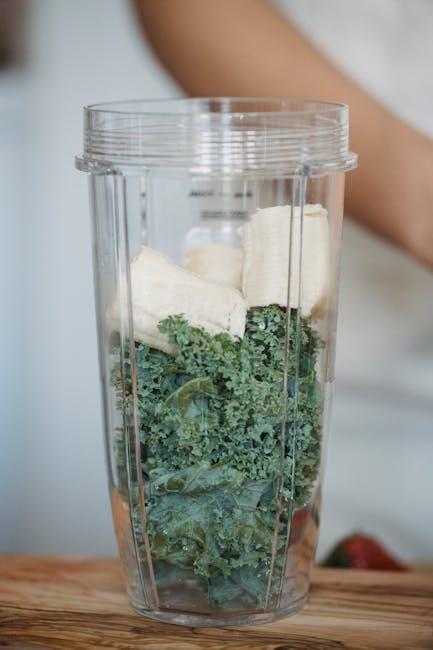In a world where health trends surge and the quest for nutritional balance becomes ever more complex, shakes have emerged as a convenient and enticing solution for those on the go.With a kaleidoscope of flavors,textures,and promises,popular shake brands flood the market,each vying for attention from health-conscious consumers. But have you ever paused to consider what actually goes into these vibrant concoctions? As you sip on that luscious blend of fruits, protein, and mysterious ingredients, it’s worth asking: what’s really behind that enticing label? In this article, we embark on a journey to decode the components of some of the top shake brands, unraveling the mysteries hidden within their formulations. From superfoods to sweeteners, we’ll break down the ingredients that make up these popular choices, offering insights that empower you to make informed decisions about what you’re fueling your body with. Join us as we explore the vibrant world of shake ingredients and uncover what’s truly inside your favorite blends.
Understanding Protein Sources in Popular Shakes
Protein shakes have become a staple in manny diets, making it essential to understand the different sources of protein that these beverages offer. Most commonly, you’ll find proteins derived from both animal and plant origins.Whey protein,extracted from milk,is a popular choice due to its high bioavailability and rapid absorption. It’s particularly favored by athletes and fitness enthusiasts looking to enhance muscle recovery. Casein, another milk-derived protein, digests more slowly, providing a steady release of amino acids, making it an excellent option for a night-time snack or meal replacement. On the other hand, plant-based options such as pea protein, brown rice protein, and hemp protein cater to vegans and those with lactose intolerance, bringing not just protein but also a spectrum of vitamins and minerals to the table.
When evaluating various shakes, it’s worthwhile to look into the protein blend. Many brands combine different protein sources to create a more balanced amino acid profile.As an example, a mix of pea and rice protein can yield a complete protein, making it suitable for overall nutritional needs. Below is a brief comparison of popular protein sources found in shakes:
| Protein Source | Type | Absorption Rate |
|---|---|---|
| Whey Protein | Animal | Fast |
| Casein Protein | Animal | slow |
| pea Protein | Plant | Moderate |
| Brown Rice Protein | Plant | Moderate |
| Hemp Protein | Plant | Slow |
Understanding these protein sources allows consumers to make informed choices that align with their dietary preferences and fitness goals. As shakes continue to rise in popularity, opt for products that not onyl meet your protein needs but also offer a balanced mix of nutrients for overall health.

Evaluating Sugar Content and Its Impact on Health
As consumers increasingly seek healthier options, it’s crucial to scrutinize the sugar content in popular shake brands. Many shakes, marketed as nutritious, often contain surprisingly high levels of sugar that can undermine health objectives. Understanding the difference between natural and added sugars is vital; while natural sugars found in fruits are acceptable in moderation,added sugars can lead to various health issues,including obesity and metabolic disorders. A quick glance at the ingredient list can reveal whether the shake primarily relies on artificial sweeteners or contains wholesome ingredients that contribute to overall well-being.
When comparing shakes, consider the per serving sugar content alongside other nutrition facts. It’s essential to read labels carefully, not just for the calorie count but for the sourcing of ingredients. Below is a simple overview of the sugar content in select shake brands:
| Shake Brand | Sugar Content (per serving) | Type of Sugar |
|---|---|---|
| Brand A | 20g | Added Sugars |
| Brand B | 8g | Natural Sugars |
| Brand C | 15g | Mixed (Natural & Added) |
knowing these aspects will empower consumers to make informed decisions that align with their dietary goals. Choose shakes that not only satisfy taste but also provide essential nutrients without excessive sugar. the implications of daily sugar intake extend beyond mere numbers; they can substantially affect energy levels, mood stability, and overall long-term health.

exploring Added Nutrients and Functional Ingredients
When diving into the world of protein shakes, it’s essential to look beyond the basic ingredients.Many brands enhance their products with added nutrients and functional ingredients designed to boost health and wellness. From vitamins and minerals to superfoods, these components can make a notable difference in their nutritional profiles. Such as, some shakes are fortified with:
- Omega-3 fatty acids – known for supporting heart health
- Probiotics – beneficial for gut health and digestion
- Antioxidants - help combat oxidative stress in the body
additionally, you’ll find an array of natural and plant-based ingredients that serve specific purposes. These might include adaptogens to help combat stress, collagen for skin health, or even adaptogenic herbs like ashwagandha. To give you a clearer picture, here’s a quick comparison of some popular shakes and their unique offerings:
| Brand | Added Nutrients | Functional Ingredients |
|---|---|---|
| Brand A | Vitamin D, Calcium | Chia Seeds, Maca Root |
| Brand B | Iron, Zinc | Spirulina, Beetroot Powder |
| Brand C | Vitamin C, Magnesium | Tumeric, Ginger |

Decoding Labels: Making Informed Choices on Your Shake
Analyzing the labels of your favorite shake brands can unveil a wealth of data about what you’re actually consuming. A careful examination may reveal nutritional benefits and also potential harmful additives. Pay close attention to the ingredients list, which is typically arranged from the most predominant to the least. Look for recognizable ingredients that enhance nourishment, such as:
- Proteins (whey, plant-based)
- Healthy Fats (nut butters, avocado)
- Fruits and Vegetables (spinach, banana, berries)
On the flip side, be wary of ingredients that might put a damper on your health goals, such as refined sugars and artificial preservatives. Understanding these terms will enable you to make choices that align with your dietary needs and health objectives. To assist with your decision-making, here’s a simplified table comparing common shake ingredients:
| Ingredient type | Pros | Cons |
|---|---|---|
| Whey Protein | High in protein, promotes muscle growth | dairy source may not be suitable for all |
| Plant-Based Protein | Suitable for vegans, frequently enough digestive-friendly | May have lower protein content |
| Sugar alternatives | Lower calories, can satisfy sweet cravings | Some may cause digestive issues |
To conclude
as we’ve journeyed through the intricate world of shake ingredients, it becomes clear that knowledge is the key to making informed choices. Whether you’re blending your own concoction at home or opting for a popular brand,understanding what’s inside your shake can profoundly impact your health and wellness journey. From proteins and sweeteners to essential vitamins and enigmatic additives, each element plays a vital role in the overall nutritional landscape.
As you stand before the vast array of shake options on store shelves or behind your kitchen counter, remember that each sip can be a step toward your health goals. Armed with this knowledge,you can navigate the swirling kaleidoscope of flavors,textures,and benefits with confidence. So, the next time you reach for a shake, take a moment to pause, read the label, and savor not only the taste but the story of the ingredients that fuel your body. The power of choice is in your hands—make it a appetizing one.



